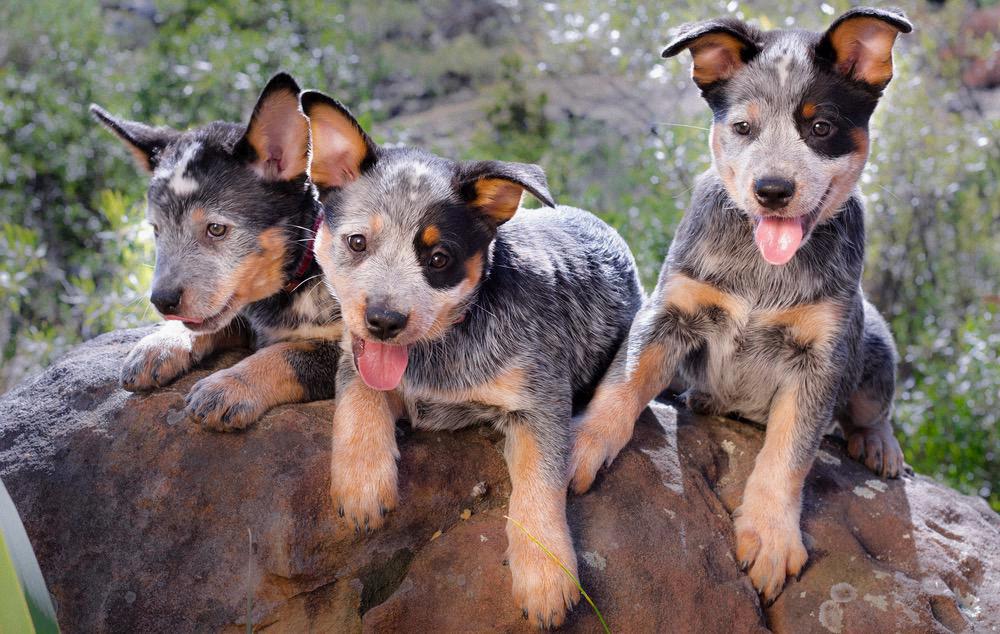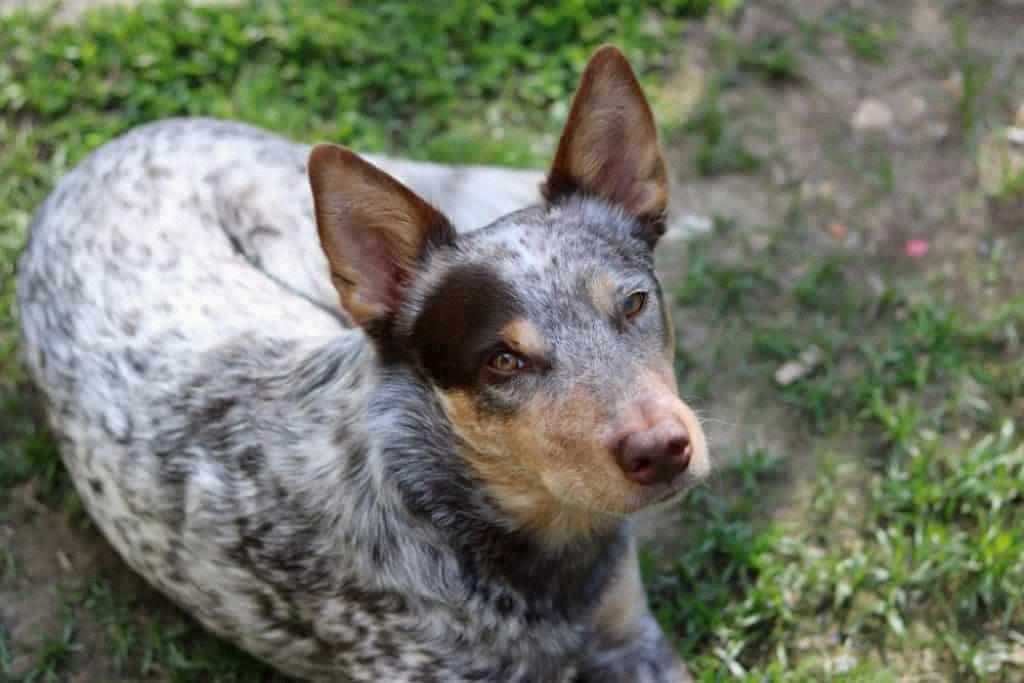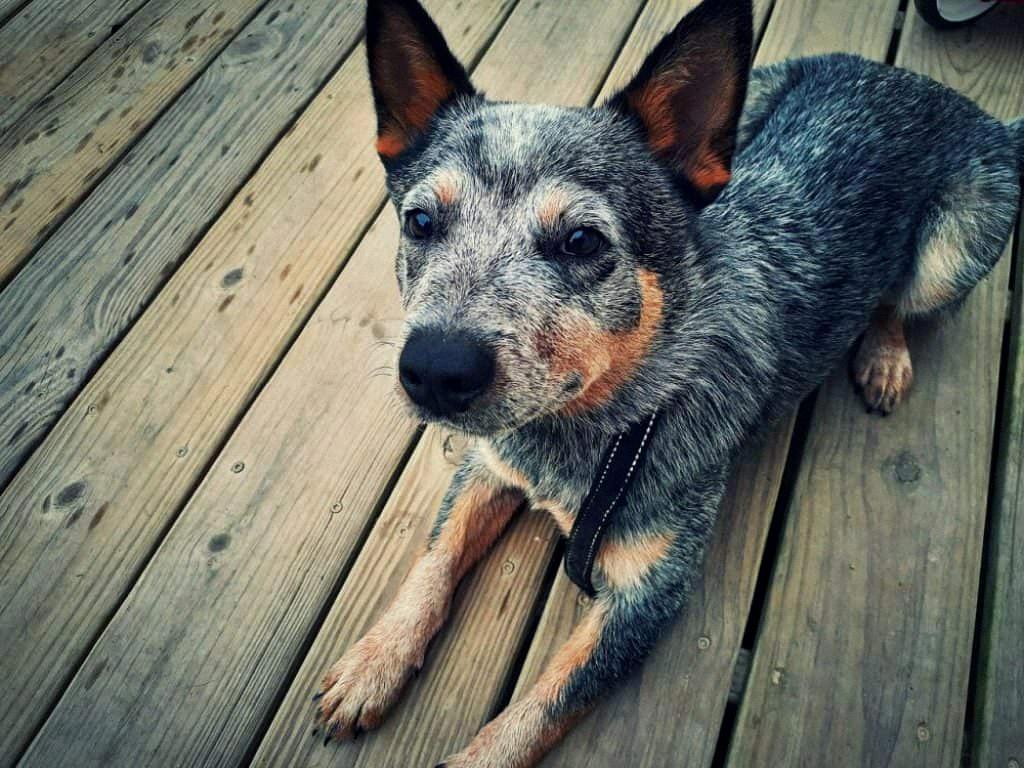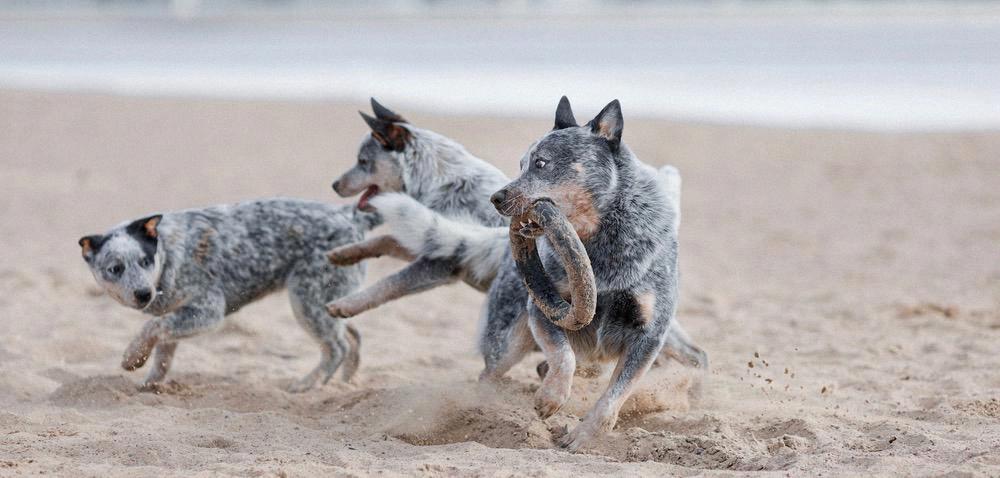Blue heelers are a breed of dog that are known for their high energy levels and need for exercise. However, this does not mean that they will never calm down. Blue heelers will eventually calm down as they age and become less active.

At What Age Do Herding Dogs Calm Down?
Most herding dogs will begin to calm down on ther own around 2 years of age, and will be on their way to emotional maturity at about 3 or 4.
Do Blue Heelers Have A Favorite Person?
Yes, Blue Heelers can certainly have a favorite person. This is usually the person who they are closest to and who they feel the most comfortable with. They will ofen follow this person around and be very protective of them.

Why Does My Blue Heeler Follow Me Everywhere?
One reason your Blue Heeler may follow you around is becase they are extremely loyal dogs. Dogs are pack animals, and they view you as a part of their family. They want to spend as much time with you as possible. Additionally, Blue Heelers are known to be very intelligent and active dogs. They need a lot of stimulation and attention, so following you around may be their way of trying to stay entertained.
Why Do Blue Heelers Bite So Much?
Australian blue heelers are herding dogs by nature, which means they have a strong instinct to nip and bite at the flanks of other animals in order to herd them in a particular direction. This behavior is oftn seen as problematic by owners of other pets or livestock, but it is simply part of the blue heeler’s natural instinct. If you are considering owning a blue heeler, it is important to be aware of this tendency and take steps to prevent your dog from biting or nipping at people or other animals.
How Do I Calm My Australian Cattle Dog Down?
If your Australian Cattle Dog is exhibiting high levels of energy and activity, there are several things you can do to help calm them down. First, make sure you are providing them with plenty of exercise through long walks or runs. Secondly, you can try feeding them a food with less fat and protein, as this can help to decrease their energy levels. Finally, you may also want to close the curtains or blinds in your home to block out any stimulating outside stimuli. Providing your dog with a variety of toys can also help to keep them occupied and calm. If you are still struggling to calm your dog down, you may want to considr enrolling them in a herding class, as this can provide them with an outlet for their energy and help them to focus their attention.

Are Blue Heelers Good House Dogs?
Yes, Blue Heelers are often good house dogs. They are intelligent and can be easily trained. They are also active, which means they need plenty of exercise. However, they can be loyal and protective of their family, which makes them good guard dogs.
Are Blue Heelers Jealous?
Yes, Blue Heelers can be jealous. If they feel that their person is paying too much attention to another animal, they may become jealous. It is important to introduce them to other animals early on so that they can become comfortable with each other.
Are Heelers Clingy?
No, heelers are not paticularly clingy, but like all dogs, they will form a close bond with their owners and may become attached to them. Heelers are bred to work closely with their owners, so they may become clingy if they feel that their owner is not giving them enough attention.
Do Blue Heelers Get Separation Anxiety?
Many Blue Heelers suffer from separation anxiety, as they are very social creatures that naturally crave companionship. Without thir owner’s constant presence, these dogs can become anxious and stressed. If left alone for too long, they may begin to exhibit destructive behaviors, such as chewing on furniture or excessively barking. To prevent this, it is important to gradually acclimate your Blue Heeler to periods of solitude, starting with short increments of time and gradually increasing the duration as they become more comfortable. Additionally, providing them with plenty of toys and bones to keep them occupied will help curb their anxiety in your absence.

How Long Can A Blue Heeler Be Left Alone?
A Blue Heeler can be left alone for a little while. Even better if we can get him out for a walk, first. Two hours seems to be the limit before boredom sets in, with the potential for mischief.
Do Cattle Dogs Pick A Favorite Person?
Yes, Australian Cattle Dogs often choose one family member as their favorite person and follow them everywhere. This behavior is known as beng “velcro dogs” and is a testament to their loyalty and devotion to their family.
How Do I Get My Blue Heeler To Calm Down?
If you want your Blue Heeler to calm down, you need to provide plenty of exercise. This breed is known for being high energy, so a good walk or run will help burn off some of that excess energy. You should also train your dog properly. This will help it focus and learn to listen to your commands. Finally, provide plenty of mental stimulation. This can be in the form of puzzle toys or interactive games. If you do all of these things, your Blue Heeler should be much more relaxed and calm.
What Jobs Can I Give My Blue Heeler?
1. Keeping Track of the Family – Australian Cattle Dogs are natural herders, so they excel at keeping track of family members.
2. Cleaning Up – Blue Heelers are known for their strong work ethic, so put them to work by assigning them cleaning tasks arond the house.
3. Toy Hide and Seek – This is a fun game that will keep your Blue Heeler entertained and mentally stimulated. Hide their favorite toy somewhere in the house and let them search for it.
4. Quiet Time – Blue Heelers are high-energy dogs, so they need plenty of time to rest and relax. Give them a quiet place to sleep or relax during the day where they won’t be disturbed.
5. Chew All the Things! – Blue Heelers love to chew, so provide them with plety of chew toys to keep them happy and out of trouble.
How Often Should You Walk A Blue Heeler?
Blue heelers are a high-energy breed of dog that needs at least 2 hours of exercise per day. This can be accomplished trough a combination of walking, running, playing fetch and other interactive games. Blue heelers are also intelligent dogs that need mental stimulation, so it is important to provide them with challenging toys and puzzles.
Are Blue Heelers Aggressive?
Despite their reputation, Blue Heelers are not naturally aggressive dogs. However, they can become aggressive if they are not properly socialized or if they are mistreated. If you are considering adopting a Blue Heeler, it is important to make sure that you are prepared to provide the dog with a loving home where he or she will receive proper care and training.
Do Blue Heelers Need Another Dog?
Yes, Blue Heelers need another dog to be happy and fulfill ther high energy levels. They love to run, play, and wrestle, so having another dog that can keep up with them will ensure both dogs are happy.
Why Do Blue Heelers Sleep Upside Down?
There isn’t a definitive answer to this question, but there are some possible explanations. Some believe that Blue Heelers sleep upside down to keep their muscles and joints healthy. When a dog sleeps on its back, gravity pulls on the muscles and joints, which can cause stiffness or pain. Sleeping upside down may help to stretch and loosen the muscles and joints. Additionally, it is thought that sleeping upside down helps to keep the spine aligned properly. Another theory is that Blue Heelers sleep upside down to stay cool. Dogs have sweat glands in their paws, and when they sleep on their back with their paws in the air, they can better regulate their body temperature.

Are Blue Heelers One Person Dogs?
Yes, Blue Heelers can be one-person dogs. They are independent and don’t require much in the way of cuddling or affection. However, their herding instincts can sometimes come into play.
Are Blue Heelers Protective Of Their Owners?
Yes, Blue Heelers are protective of ther owners by nature. They have a strong herding and guarding instinct that makes them ideal family pets and guard dogs. They are fiercely loyal and will defend their loved ones with bravery if necessary.
How Smart Are Blue Heelers?
The Blue Heeler is a highly intelligent dog breed that is ranked 10th in terms of obedience and working intelligence. They are quick learners and have superb instinctive intelligence, which makes them great cattle-herding dogs.
Can Blue Heelers Be Crate Trained?
Yes, Blue Heelers can be crate trained. You will need to purchase a crate that is big enough for your puppy to turn around and sleep comfortably in. Once you have introduced the crate to your puppy, put them in the crate when you aren’t able to supervise them. Take the puppy to their potty spot when you let them out of the crate, even if they have only been crated for a couple of minutes.
What Dogs Do Blue Heelers Get Along With?
Blue Heelers are a versatile breed and can get along with many diferent types of dogs. One of the best companions for a Blue Heeler is another dog that can keep up with their high energy level, such as a Corgi or a Pit Bull. Border Collies are also a good choice, as they share many of the same herding instincts as Blue Heelers. Australian Shepherds make excellent companions for Blue Heelers, as they are both intelligent and active breeds. Collies are another good choice, as they are gentle and good-natured dogs that can provide some calmness to a Blue Heeler’s life. Boxers are also a good option, as they are playful and friendly dogs that will enjoy spending time with a Blue Heeler.
Is It Hard To Train A Blue Heeler?
No, it is not hard to train a Blue Heeler. Blue Heelers are bred to work closely with ther humans, so they are easy to train and learn commands quickly. All you need to do is use positive reinforcement when your Blue Heeler puppy does something you want it to repeat.
Why Does My Blue Heeler Bite My Ankles?
There are a few reasons why your Blue Heeler might bite your ankles. One possibility is that they’re trying to herd you. This is a behavior that’s common in herding dogs, who were bred to round up livestock. When they see someone running or playing energetically, it may trigger teir instinct to herd. Another possibility is that your dog is simply playing rough and doesn’t realize that their teeth can hurt you. If you’ve been encouraging them to play roughly by wrestling with them or playing tug-of-war, they may not understand that they need to be gentle with you. Finally, it’s possible that your dog is anxious or stressed and is using nipping as a way to release that energy. If you think this might be the case, try spending more time bonding with your dog and giving them plenty of opportunities to exercise.
Are Blue Heelers Mouthy?
Yes, Blue Heelers can be mouthy. This is often due to their herding instinct and their need for attention. They may nip at people’s heels or chase after them in an attempt to herd them. This behavior can be frustrating for owners, but it is important to provide Blue Heelers with plenty of mental and physical stimulation to avoid boredom and reduce mouthy behaviors.












